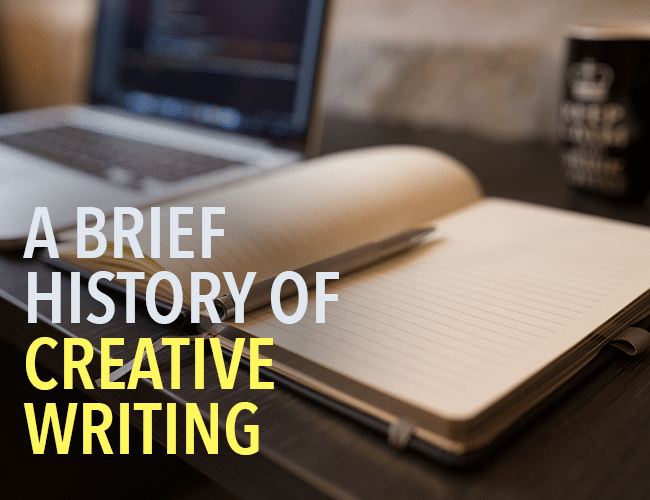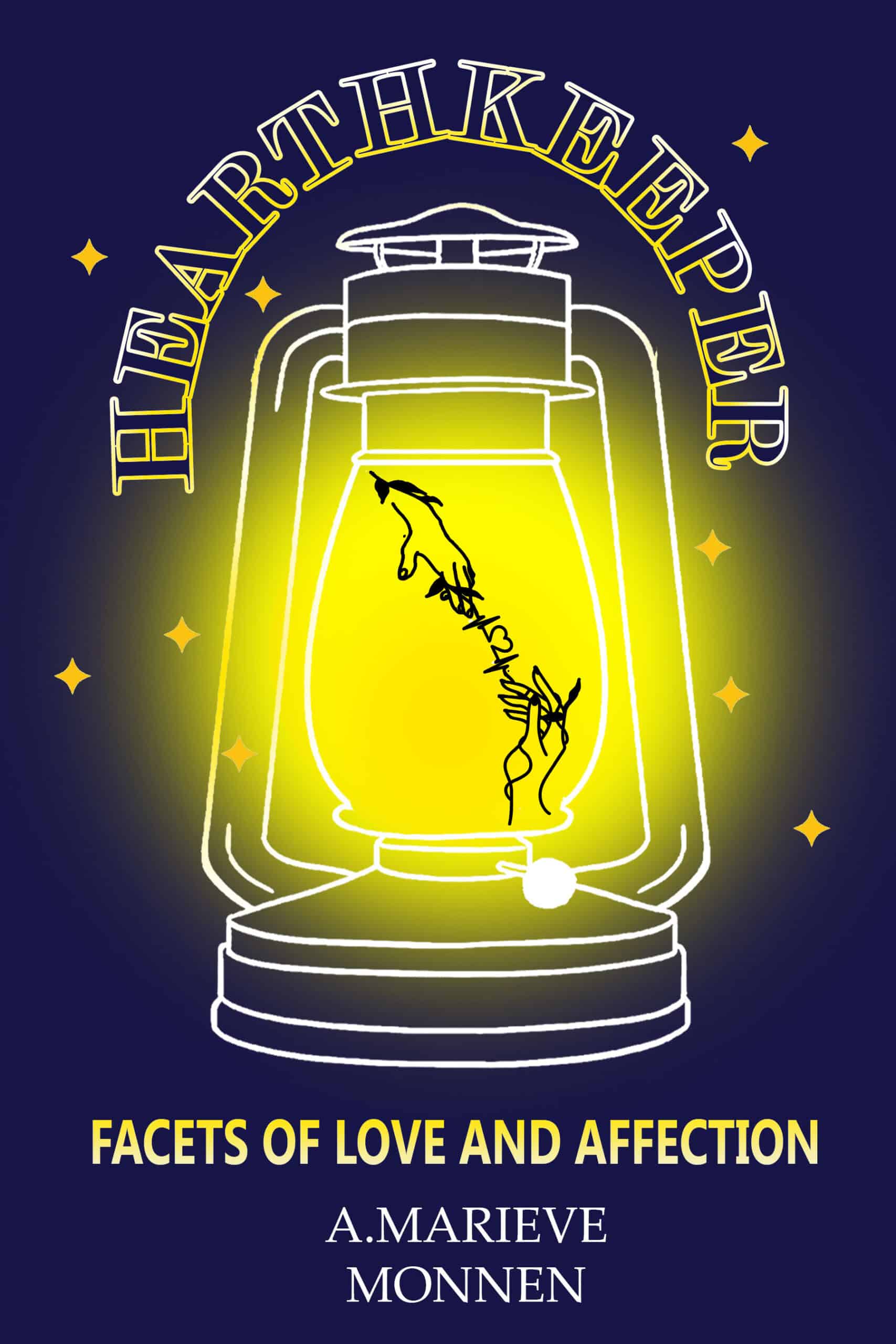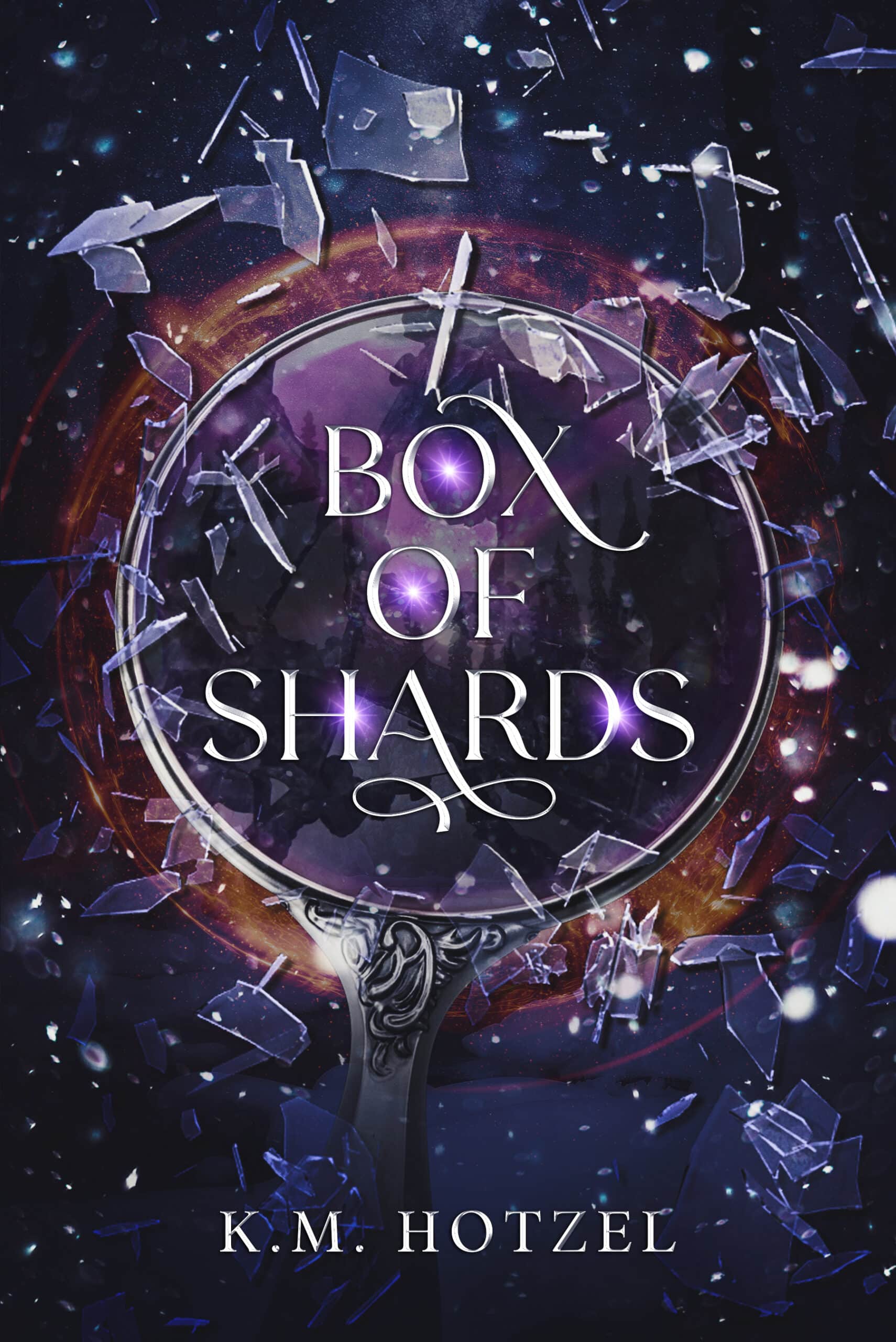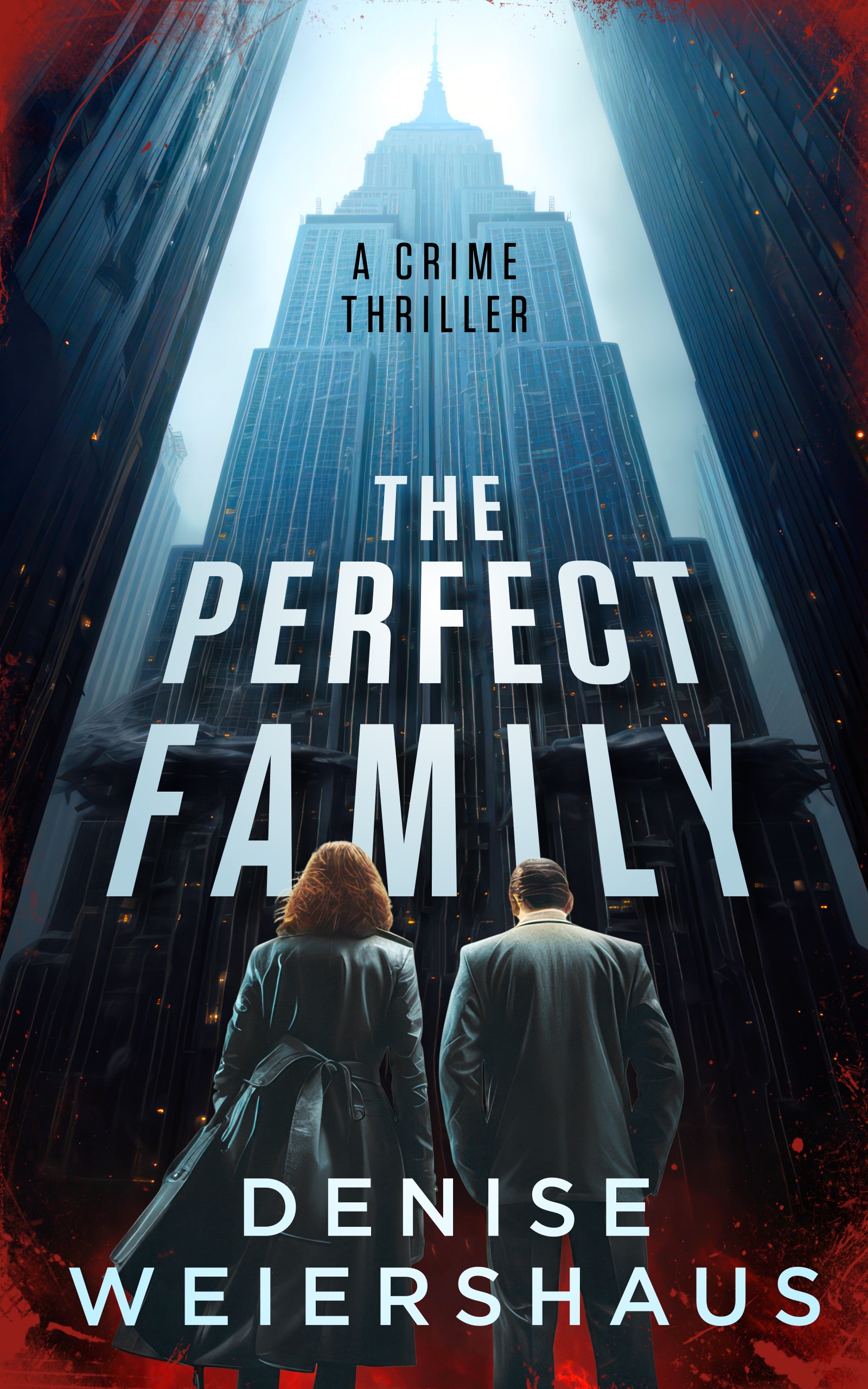There are hundreds of new programs, websites, and apps to help with your creative writing, but it might help you put them into perspective by examining the history out of which these technologies have emerged.

Like all technology, new tools are built on the foundation of the ones that came before them. Let's take a quick journey through the history of creative writing tools so that we can evaluate modern creative writing tools in a historical context.
Oral Storytelling
Originally, stories were passed from generation to generation through oral storytelling traditions.
In these traditions, the primary “writing” tool was the storyteller’s memory and voice, though stories were often augmented by instruments and dance. Stories were imbued with the personality of the teller, and took on color in the creative exchange with the audience.
Stories evolved over time through the retelling. They improved, were embellished, or were transformed into myth and legend.
The Written Word
It wasn't until (relatively) recently, with the invention of the written word (archaeologists place its formation around 3200 BC, depending on location) that we started writing stories down.
This is where the history of creative writing really begins.
Some of the earliest examples of written stories in the Western tradition are the Bible and Homer's Odyssey; in the Eastern Tradition, the Indian Vedas and Sanskrit poems; in central America, the Mayan Codices.
It’s likely that many of these early texts were simply being transcribed from the oral tradition. The legend that Homer was blind—whether it’s true or not—gives us a symbolic link connecting the oral and written storytelling traditions.
In any case, storytellers started writing their stories down. Once that happened, the process of creative writing evolved.
Instead of telling and retelling stories orally and making them better over time, written language gave storytellers the ability to tell themselves the story over and over again using a drafting process. It gave them a way to record more stories by providing them a physical extension of their memory: ink and paper.
The art of writing was an esoteric discipline for a long time. At first, only monks and the rich and educated classes were taught how to write. Inks and quills were expensive. Paper was hard to come by and difficult to make. World literacy skyrocketed in the second half of the 20th century. As late as 1950, world literacy was estimated at a mere 36%.
Today, 83% of people can read and write.
The Printing Press
Apart from the expense of writing in ancient times, many obstacles to distribution had to be surmounted. The Bible is an example of a collection of stories that found early success and popularity. But access was limited. Bibles were copied out by hand and manually bound.
This laborious process continued for several hundred years, until Gutenberg came along in 1450 and invented the printing press. Though it was not the first printing press (the Chinese are often given credit for inventing the first moveable type), it changed everything.
The printing press made the first mass production of books possible. It’s important to understand that Gutenberg’s press led not to an improvement of the writing process, but to the distribution process. This is an important distinction. Writing a story was still laborious as ever, but now a writer could reach their readers in a more affordable way.
Typewriters
Around the late 1800s, the invention of the typewriter began to develop the creative writing process in earnest.
The typewriter quickly became an indispensable tool for writers. Instead of writing a story by hand, then having it typeset by a printing press, a writer could now push buttons to get their words printed directly on the page. It made the writing process faster and more efficient, and the wide and rapid adoption of the typewriter proved its worth.
It’s not a novel thing to you and I that a writer can push buttons and see their words appear before them—we grew up with computers. Yet, to writers at the tail end of the 19th century, it must have been a magical experience.
Computers
A hundred years later, computers were invented and another dramatic shift in the writing process was made possible. Instead of typing a story on paper, writers could type it on a screen—no more white out, no more wasted paper.
The invention of computers, and the writing software developed for them, marks the next evolutionary step in writing tools. A Brief History of Word Processing explains: “With the screen, text could be entered and corrected without having to produce a hard copy. Printing could be delayed until the writer was satisfied with the material.”
This was followed by increased storage capacity, which upped the volume and number of works which could be edited or worked on simultaneously, spell check, instantly accessible dictionaries, and other innovations.
Non-Linear Word Processing Software
This brief history of creative writing tools brings us to the present day.
And yet, word processing software has not changed all that much in recent years. Modern versions of Microsoft Word, for example, are almost identical to the version from 1997 on which I first learned word processing. That annoying paperclip fellow is gone, but the interface of the software and its core functionality remains the same. Namely, the writer is presented with a single vertical column of digital “pages” on which to type. In most word processing software, that linear structure cannot be changed.
The well-informed among you are now thinking about the exceptions to this rule, or what I like to call the next milestone in creative writing tool history: non-linear creative writing programs like Scrivener and Ulysses.
Instead of trying to imitate the typewriter, these programs approach writing from a structural angle. They allow you to write out of order and rearrange components (pages, scenes, chapters, etc.) in a hierarchical tree structure. They also give you the ability to apply meta-data to your work—things like point of view, draft status, etc.—in an effective, tangible way that increases understanding and, if used correctly, productivity and enjoyment in the writing process.
In the history of creative writing tools, non-linear word processing software is the cutting edge.
Digital Publishing
Modern authors also need tools that gives them a leg up on the digital first approach. Anyone who has ever tried to convert a Microsoft Word document into an ebook will sympathize with this challenge—Word has a penchant for adding hidden formatting tags and making it difficult for writers to convert their stories into publishable digital formats.
Tools like Scrivener help remove that pain by giving you a compile process that is designed to export for all the modern e-book formats.
I don’t want you to struggle with out-dated linear word processing software anymore. I want you to be an evolved writer.
I want you to think digital first. I want you to write in a way that’s natural to you—whether that’s out of order or linearly—using a modern piece of software that’s designed for both.
Scrivener is my tool of choice, and I've already written several articles about how to use it. Over the coming weeks, I'll continue to cover the writing process with Scrivener in detail, from planning a story all the way through compiling to publication-ready formats.
I hope that with this historical context, you'll be able to see the benefits of working with the most modern creative writing tools. And if the learning curve of a program like Scrivener intimidates you, you're not alone. Stay tuned, and I'll walk you through it from beginning to end.
Which tools do YOU use to write? Let us know in the comments section.
PRACTICE
Consider these questions as they relate to your own writing process:
- Do you write out of order? Why or why not?
- How does your current set of writing tools fit your process?
- Have you tried new tools to improve your process? If so, what blockers have you come up against?
Post your answers in the comments so we can discuss and address your concerns in the upcoming series of articles.
Matt Herron is the author of Scrivener Superpowers: How to Use Cutting-Edge Software to Energize Your Creative Writing Practice. He has a degree in English Literature, a dog named Elsa, and an adrenaline addiction sated by rock climbing and travel. The best way to get in touch with him is on Twitter @mgherron.



I have used them all. Went to college carrying an Olivetti manual portable, that I think was originally used in WW II. I will say this for manual typewriters, they worked. Period. Didn’t need batteries, or power cords, or nothing, but fingers, brains, and a little oil now and then. Ok good stiff vellum paper and an eraser were additional required equipment, unless you wrote perfect papers, the first time, or could afford to pay someone to type them. Actually did that once. I think she was dyslexic because most two letter words came out reversed … “is” was “si” and “it” was “ti”. Couldn’t say much as she was my sister-in-law.
I have tried new tools. The problem is every one of them had a developer with a feather up their butt that thought “they” new how to do it better. So, you get used to keystrokes you use in one, go to another and lose your document. Google Docs is my latest nemesis.
I write out of order. Usually, what happens is, I set my music and slip my headphones on and pace in a vaguely elliptical pattern around my office, thinking, until, eventually, a nice line comes to mind, some felicitous arrangement of words, and I type them into a note taking program, which I use in lieu of the 1,000+ randomly titled “note.txt” files that would otherwise clutter my hard drive. This process repeats, or fails to, for hundreds of iterations, until, at last, the floodgates open and I write thousands of words in the span of an hour in a fit of fervid fury. On exactly zero occasions have the ideas come in order. The rest of the process involves me sitting down with a lot of caffeine and, paradoxically, enough tranquilizers to anxiolytize a small eastern European country, and try to stitch it all together.
When I try to sit down and write from A to B like a normal human being, it sucks, which is why all my comment-type posts are so boring.
I love fountain pens. I love all pens. Love calligraphy, penmanship, nice paper, etc. And that sucks, because my handwriting is so bad, even I can’t read it, and I write too slowly to keep up with myself, and my hands cramp and start to hurt after only a minute or so of writing. I do all my writing in ancient, old-fashioned programs you’ve never heard of, and really ought not to, because they’re terrible.
I’ve tried to use typewriters, but I get cramps in my wrist if I don’t use my keyboard; it’s ergonomic and it folds in half, so you can keep your hands in a nice, neutral position. This is a major pain, because you can’t take the stupid thing anywhere. Popping open a laptop to write in the park? Nope. I’m thinking about buying a tablet and building some sort of convoluted keyboard/tablet carrying device, so I can write where I please without worrying about the distraction of wrist pain, but with my luck, my editing programs won’t work on a tablet, and I’ll be totally screwed.
In short, my ideal writing environment is a space station, I hate technology, I can’t work without technology, and writing is a gigantic pain. The end.
I used to write all in Google Docs because I like being able to access my work anywhere on any device, but it’s not really the greatest for organizing your writing. I love the ability to rearrange. Scrivener’s great, but you can’t access it anywhere on any device, so I’ve just started using a web-based program called Novelize, and I’m very impressed with it. It gives me the ability to outline, write, and re-organize, and it goes with me anywhere. GetNovelize [dot] com for anyone interested.
I use CMAP for arranging concepts and relationships, Scrivener to gather research and format the document, and sometimes TextEdit for random text creation to slot into scenes or other spots.
I am not in the modern generation. When I attended college, we wrote our papers. And, I might add, we knew cyrillic. Kids aren’t taught to do more than a little printing. Granted, I can do ‘search’ and find information. I was fine with my Britannica. I am behind the times and look backward in time. I can use my computer, but more complicated business as submitting typed papers, I still can’t do. In HS, the smart ones studied Latin, me included. I should have taken typing, but that course was not for the bright ones, me. I can’t keep up with modern technology, because I wasn’t taught that way in the 50s.
Jean, I can understand the challenge (I have a side line coaching fellow seniors on the transition to technology, so am familiar with the difficulties). An advantage in diving in rests with the ability to get exposure to ways of approaching your writing that otherwise might not occur. You can still act on this exposure in an analog, i.e. paper and pencil, way. For example, one post mentions mind-mapping and I mentioned CMAP, an application for working with logic and concepts and relationships between ideas, concepts–or characters 😉 Each of these approaches can be carried out manually with the advantage that the application can’t drive you along the path it wants. Happy writing–whether printing or cursive!
Hi Matt!
I’ve read about Scrivener, and I’m sure it is every writer’s ambition to have this writing tool. I use Microsoft Word for writing my stories, poems, novels. I used to write all my first drafts in longhand. I switched to the key board when I learned to type faster, and use the handy tools provided in Word.
I try and write in order, and cut or copy and paste when I’m revising. I haven’t tried any new tools.
I’d love to know about Scrivener. I’ll appreciate any information you post on WP.
Many thanks,
Lilian
I’m still a devotee of Word.
It’s a versatile tool when you get to know it, and while it certainly tempts me to rip my hair out sometimes, we make our troubled relationship work.
I’d be interested in trying Scrivener out. However, many aspiring authors spend too much time and treasure on software or hardware, thinking that this will make them successful. I want to achieve success with the tools I currently have, due to my DEDICATION, and then upgrade when my attitude is right.
I use a free version of Microsoft Office called Open Office. It works pretty much the same way. Sometimes, when I write the first rough draft, I turn to pen and paper.
Sometimes, I write out of order if I don’t know how to transition from one paragraph to another, or from going from one event to another. Sometimes, I don’t know how to start a story, and so I will start with a bullet point I have in my outline. I’ve heard that short stories usually take a couple of hours—at most, a day—to write. I’m not wired that way.
I don’t write out of order, but I plan out of order. I have a full page somewhere here detailing plot points and what set what in motion. But the majority of the process stays in my brain. It froths and boils there, taking new forms and new twists until I pick out the ones I like best with a pencil.
Wordpad fits my process perfectly because I can write page after page and stuff it all into one document I can find easily. But I am a hybrid Writer. I like to type and write stories and ideas down as they come, primarily ideas into paper and stories into the computer.
I have not tried out any new tools to improve my process but, I think after reading this I might try out a few new programs.
Looking forward to reading these upcoming articles. I don’t know a thing about Scrivener, but I do know that handing my WordPerfect document to my illustrator has caused her hours of grief trying to insert the art — and the printer says, “No wonder. It doesn’t work.”
I do write out of order. I write in my sleep and wake up and head to the computer. I write for hours until I’ve downloaded my dream. I call it dream simply because I’ve done this for 20 years and I don’t know what wake to call it.
I have written and self published one book and I can relate to this article. I was almost in tears trying to convert the word document into epub format. Finally I got the job done through a professional for a fee.
I tried using Scrivener, I downloaded the trial version but I somehow could not figure it out. I have gone back to using word.
But … Scrivener does have a compile option that outputs an epub format. I do understand about flipping between interfaces. It can be a pain.
I try not to write out of order, but sometimes I get so stuck on a part of my story it’s just easier to move on and go in a different direction for a while until I can figure out how to get out of what is blocking me.
I use Microsoft Word for writing. Suits me because I can edit again and again and try out different techniques without having to waste paper.
“And if the learning curve of a program like Scrivener intimidates you, you’re not alone.”
This is my first red flag recognizing “non-user friendly” incompetent software program design – non-intuitive use difficulty by computer literate beginners. If the intuitive program design hurdle hasn’t been removed, then the software is not ready for prime time use – rather its by programming geeks – for programming geeks, and as you know writers aren’t usually software geeks.
The next thing you will tell me is how powerful Scrivener is. However, I’m way ahead of you. My brother-n-law is a senior Apple platform software engineer and over the last 10 years I have learned that is that anything he describes as “powerful”- has nothing to do with “power,” but translating from geek speak – simply means “unnecessarily complex” and saturated with lots of options that you will never use – unless you are a software engineer.
I have tried Scrivener and unfortunately it is far from and intuitive writing tool and has lots of features that most writers will either ignore and never use, or just be confused by. I agree that Word has its share of bugs and formatting frustrations. However, exchanging those frustrations for additional new and unknown frustrations in a long learning curve – especially while in the middle of a complex writing project is not a solution, but rather just another problem for the writer.
Scrivener should hire some successful writers that also have programming and software design skills, not the other way around. Unfortunately, software programs are almost never designed and built by the specifically skilled who actually need them. Scrivener seems to be the same. Additionally, software programmer populations are composed of people with higher than average Asperger’s Syndrome personality types. In fact, Asperger Syndrome personality types (like my B-n-L) are actively sought out for their unique focus abilities by software companies, but this has software design down side. The most common disability of Asperger’s Syndrome is difficulty in communication skills. Having communication ability challenges to start with, presents its own challenges in communication software design in general. I can see this as being an even greater challenge in developing useful writer and other communication software tools. Scrivener I don’t believe is as “evolved” as you perceive. That said, I will always appreciated your efforts in untangling its maze.
Hi dduggerbiocepts, after reading your post on Scrivener I have decided to stick to Word for writing my stories and novels. I’m not and never will be a computer geek, and the advanced programme of Scrivener awes me, probably because I’ll be lost in trying to make good use of all the aps.
Thanks for clearing my curiousity.
I have just fallen in love, because as a windows user and cheapskate, Scrivener doesn’t hold much promise… Bibisco. Seriously, try it! If Bibisco was a person, I’d marry it! And I’m not even joking.
That looks pretty cool, Meg! But just out of curiosity, do you find Scrivner prohibitively expensive? It seems really really cheap to me… $50 for a lifetime license is GOOD.
I’m from India, Matt.